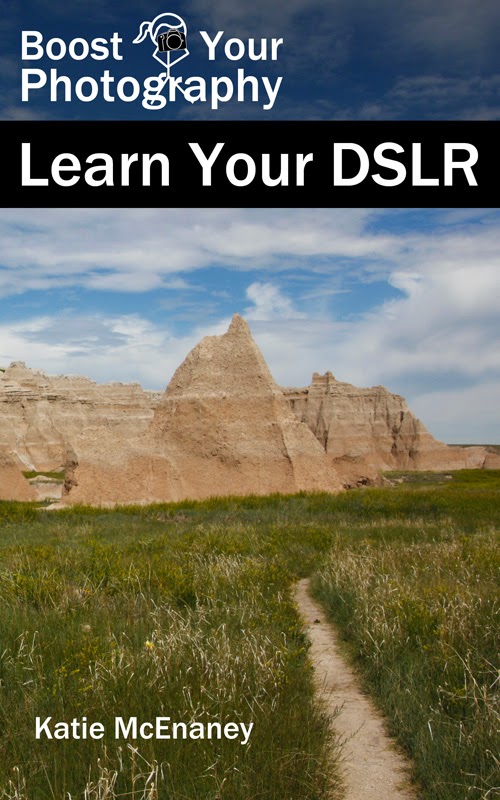This month'sBoost Your Photography: 52 Weeks Challenge is focusing the different creative shooting modes available on your camera: program mode, shutter priority mode, aperture priority mode, andfull manual mode

Shutter Priority Mode
Shutter priority mode is useful in any situation when you want to control the shutter speed of your camera. In shutter priority mode, you set the ISO and shutter values, and the camera will choose an aperture, based on its calculation of the correct exposure. (Read more about correct and creative exposure in the articleAll about Exposure or about ISO in ISO Basics.) For many cameras, shutter priority mode is labeled S for shutter, but Canon cameras use the abbreviation Tv for time value.Not sure what shutter pace to use when? Start with the object Shutter Speed: an overview for a quick introduction to various shutter speeds. Or examine Shutter Speed Guidelines for a reachable pocket-sized reference about recommended shutter speeds.
Common Situations to Use Shutter Priority Mode
Freezing Motion |
| Seagull in Flight, 1/500th of a 2nd |
When you need a moving challenge to seem sharp, you want to apply a fast shutter velocity, in any other case a few or all your subject will turn out blurred. This is a commonplace trouble if you are interested by capturing natural world, pets, or kids. A general rule of thumb is to apply a shutter velocity at or quicker than 1/250th of a 2d, but very speedy topics (like birds in flight) can also want a shutter speed on the order of 1/2000th of a 2nd.
Hand-maintaining
 |
| 1/fifteenth of a second - I was too shaky, despite the fact that the meerkat became nonetheless |
If you are shooting without a tripod, exercise, exact posture, and consistent breathing allow you to hold your digicam constant, however there may be a restrict. The general rule-of-thumb is that you can hand-preserve for the fraction of a 2nd equivalent to the focal period of your lens, so 1/50th of a 2d for a 50 mm lens or 1/200th of a second for a two hundred mm lens. Image stabilization (IS, variously referred to as vibration reduction or vibration manipulate) can expand that speed barely. Especially in case you are shooting in low light situations, you could want to trade to a better ISO or a much wider aperture to keep the shutter pace that you need.
Intentional Blur
There also are conditions while you would possibly choose to apply blur to your photo. With panning, you move your digicam in sync together with your problem to blur the background. (Read greater approximately Panning in Photography.) You also can circulate your camera even as shooting for different innovative consequences. (Read greater in Creative Reasons to Move Your Camera.) With waterfalls, you want a protracted shutter velocity of at the least a second or longer to feature a easy, silky blur to the flowing water. (Read extra inYes, Go Chasing Waterfalls.)
Playing with Light and Long Shutter Speeds
Longer shutter speeds assist you to use light and light painting for charming images. Longer shutter speeds can blur visitors lights into thrilling styles (study How to Photograph Traffic Light Trails) or nighttime carnival rides (examine Long Exposure Photography on the Fair(e)). You can spin orbs of mild (examine Light Painting: a way to spin an orb) or orbs of hearth (examine Spinning Fire with Steel Wool Photography). You may even shoot swirling patterns within the stars (read Stacking Photographs: Beyond Star Trails). Each of those diverse techniques entails a tripod and a shutter pace measured in complete seconds and longer.
Shoot in Shutter Priority Mode
This week your challenge is to try shooting in shutter priority mode. Seek out some situations that might require a specific shutter speed, whether it is a quick speed to capture a fast-moving subject or a long, slow shutter speed for artistic impact. See how controlling your shutter speed can help you get exactly the shot you want.Share a link or a photograph in the comments below, or consider joining the BYP 52 Weeks Google+ Community to share your weekly photograph and see what others are capturing.

Boost Your Photography: Learn Your DSLR is available from Amazon. Get the most from your digital camera with sensible recommendation about the technical and innovative components of DSLR photography with the intention to have you ever taking stunning pics right away.


No comments:
Post a Comment